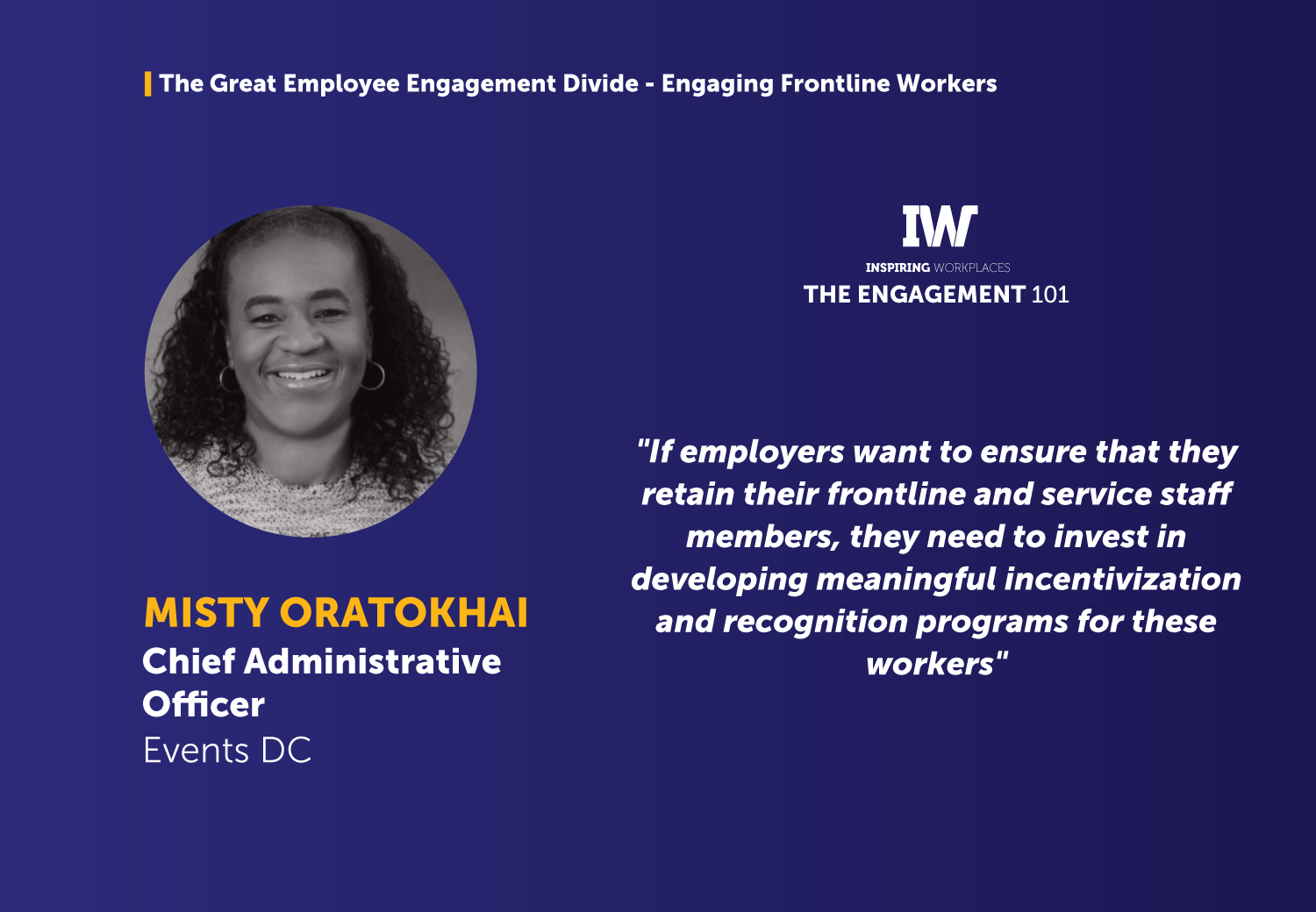
10th November 2021
The Great Employee Engagement Divide – Engaging Frontline Workers – Misty Oratokhai

This snippet is part of our Ebook The great Employee Engagement Divide – Engaging Frontline Workers. Advice and suggestions from our Top 101 influencers. You can download the full eBook with all the advice here.
Misty Oratokhai, Chief Administrative Officer, Events DC
Divisions have always existed in the workplace, it is not a new phenomenon because of the pandemic, but it has become more apparent and, indeed increased. In the past, these divides were between generations, created by silos in departments, and scale and scope of responsibilities. And…although we have always known that the socio-economic and educational gap existed, it has become even more apparent than ever before around the concept of who can work from home or remotely and who must be onsite. For those who have the opportunity to work remotely, the concept of loss of employment, although possible, was less likely, while frontline and service industry workers have been more likely to be on the unemployment line or forced to work onsite with increased risk for exposure to the virus. The concept of equity has arisen front and center. According to the United States’ Bureau of Labor Statistics, 70% of people with a Bachelor’s Degree can work remotely, compared to 17% of individuals without a high school diploma or 30% with a high school diploma.
Does the idea of those who get to work remotely versus those who have to be onsite boil down to value? Is it that simple? Why do the people who have to be onsite feel that something unjust is occurring, while those who remain in the safety of their homes to perform job tasks are ambivalent to the feelings of their peers? Frankly, because although, often times the frontline or service worker is classified as “essential,” they do not feel valued. In fact, during the pandemic many frontline and service workers felt disposable. During the Great Resignation, those same workers were initially overlooked as risks for departure. No one thought they would have difficulty hiring or retaining wait staff, retail workers, commercial truck drivers, security guards, etc. However, many employers remain oblivious to the fact that these are the people driving the gig economy, the folks who have decided they will do their own thing and control their destiny.
If employers want to ensure that they retain their frontline and service staff members, they need to invest in developing meaningful incentivization and recognition programs for these workers. The possibilities are endless, and range from simplistic to extraordinary, but someone in every organization should be focused on showing these employees, who are integral to keeping the doors open, and essential to the lifeblood of the company that they actually matter. For a solid start, consider:
- Implement a Retention bonus program for good performers, who have continued to report for duty;
- Institute temporary premium pay – it does not have to be a permanent fixture, but rather for the instant circumstances;
- Conduct roundtables to allow for open, honest communication about feelings related to perceived differences in treatment of remote versus onsite staff;
- Be transparent about decision-making relative to work assignments;
- Continuously direct positive, appreciative communication to onsite staff, while not devaluing contributions of the remote workforce;
- Introduce some level of hybrid work, which de-escalates negative feelings about those not required to work onsite;
- Host special celebrations for onsite workers;
- Create feature articles on staff members who are onsite, show pictures or videos of them in action;
- Have remote work employees send videos thanking onsite colleagues for securing and maintaining facilities;
- Maintain safe and healthy work environments for onsite staff, including providing PPE;
- Use social media to expand reach of thank you beyond worksite; and
- Offer extra days off for onsite workers.
These are just a few ideas that may not completely close the void between workers, but will definitely reinforce the notion that frontline and service staff are valued, and their efforts are appreciated. More work must be done to address the gaps between these workers, which should be on everyone’s DEI “to do” list.

